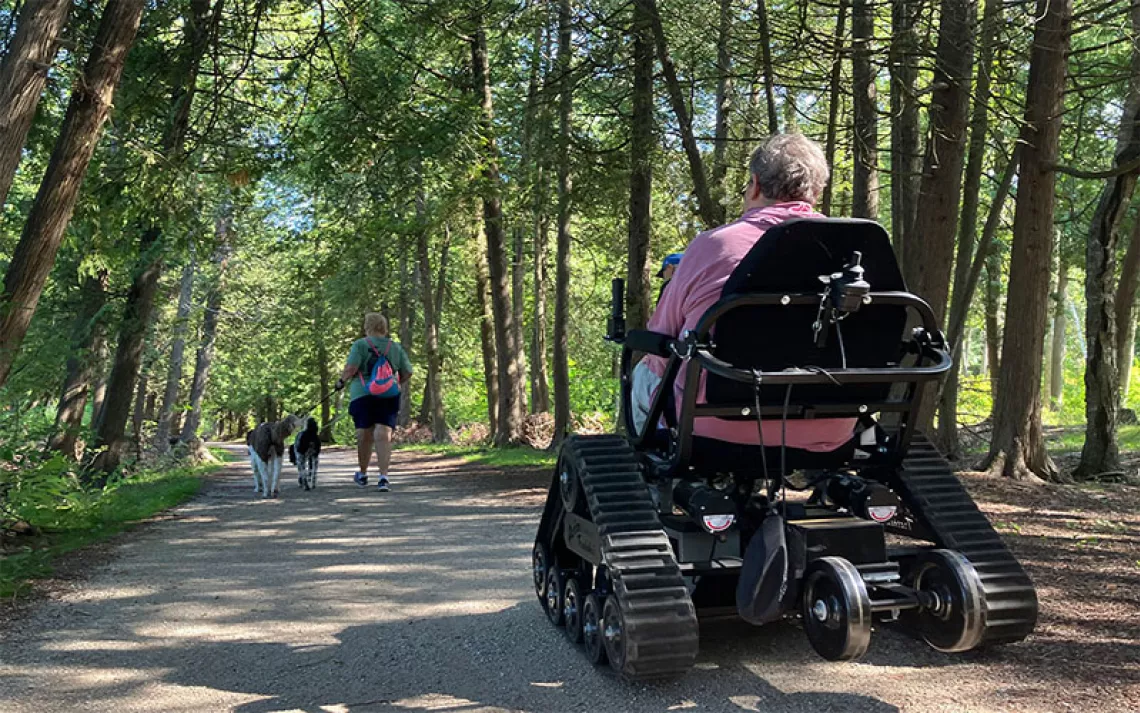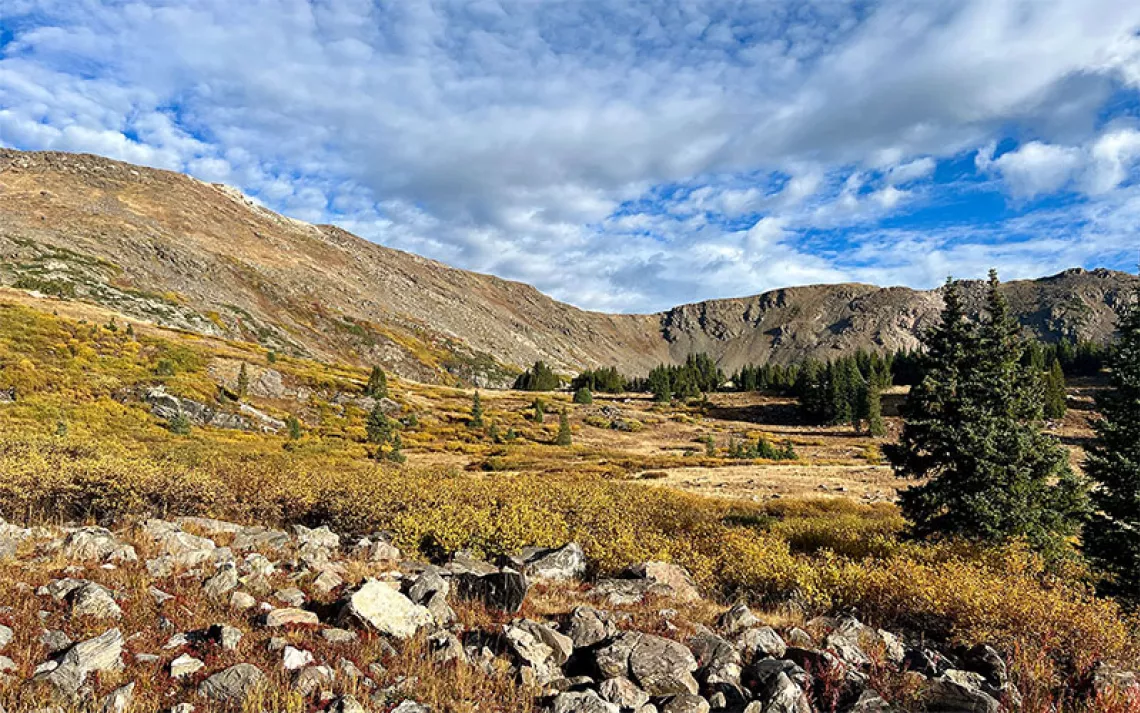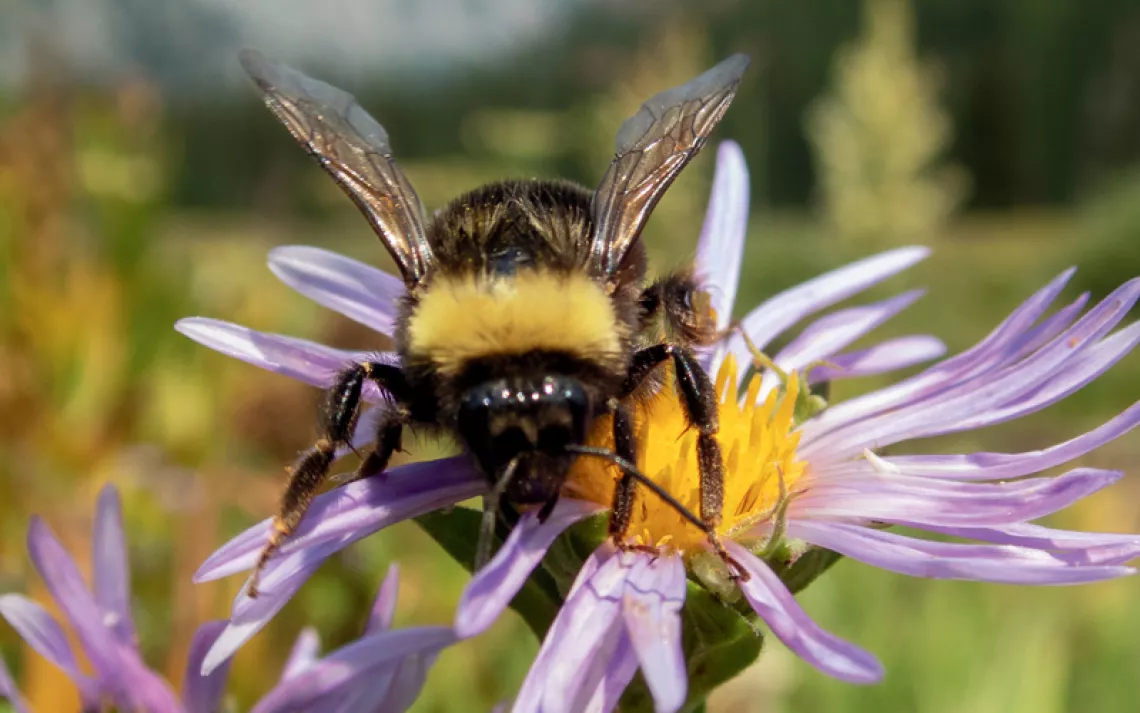Teaching My Daughter to Love Nature, One Bite at a Time
A mom learns to let her child experience the outdoors her own way
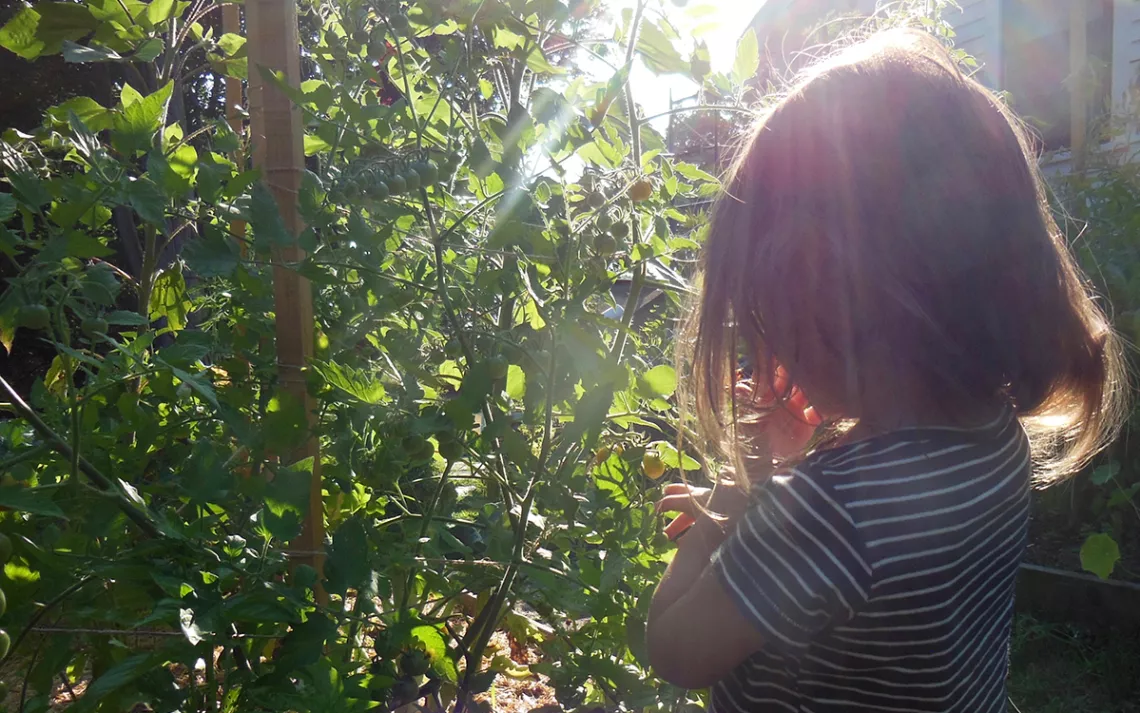
Photos courtesy of Amanda Giracca
When my daughter was an infant, I loved tucking her into a carrier and taking her for hikes. I wanted her to experience the dark cloister of a hemlock forest, the sound of a tumbling waterfall, the way the light shifts when you emerge from the woods into a clearing, the scratchy swish of tall grass against her skin. I didn’t exactly know why these sensory experiences were so significant, but I knew intuitively that they were. I wanted ecological concepts to be second nature to her, as they always have been to me.
But as soon as my daughter was old enough to reject the pack, she became equally obstinate about covering any kind of ground. She’d happily begin a walk with me, only to, just a few feet down a trail, turn around and announce she was heading home. Or she’d plant herself in the middle of the trail and wail until I picked her up. Now she is a month shy of three, and it’s still a challenge to get her to walk in any direction. The more I try, the better she gets at resisting. My daughter, it turns out, hates hiking.
Where did I go wrong, I often wonder? I want so badly to raise a daughter who feels at home outside. “The demise of the free-range kid!” article after article warns. Every month there is a new study about how nature curbs depression, anxiety, attention deficit disorder. We lament how kids don’t experience the elements, don’t know the names of birds and trees, don’t know how to just play anymore. I thought I’d nip that in the bud by starting my kid early. But I worry that I’m failing.
I’m worried for her well-being, but part of this is also personal: I spent the past 20 years of my life as someone whose identity is deeply entwined with the natural world. What if my daughter’s isn’t? Will we be strangers to one another? I’d always thought we’d bond over the sound of hermit thrush song ringing through the woods at dusk, but maybe she has different plans. “She’s a toddler,” friends reassure me. “You have time.” I realize her reticence is normal for her age, but I also feel like I’m losing precious ground. What if there is no wilderness left for her to experience later? What if there are no birds left to name? What if I really don’t have time?
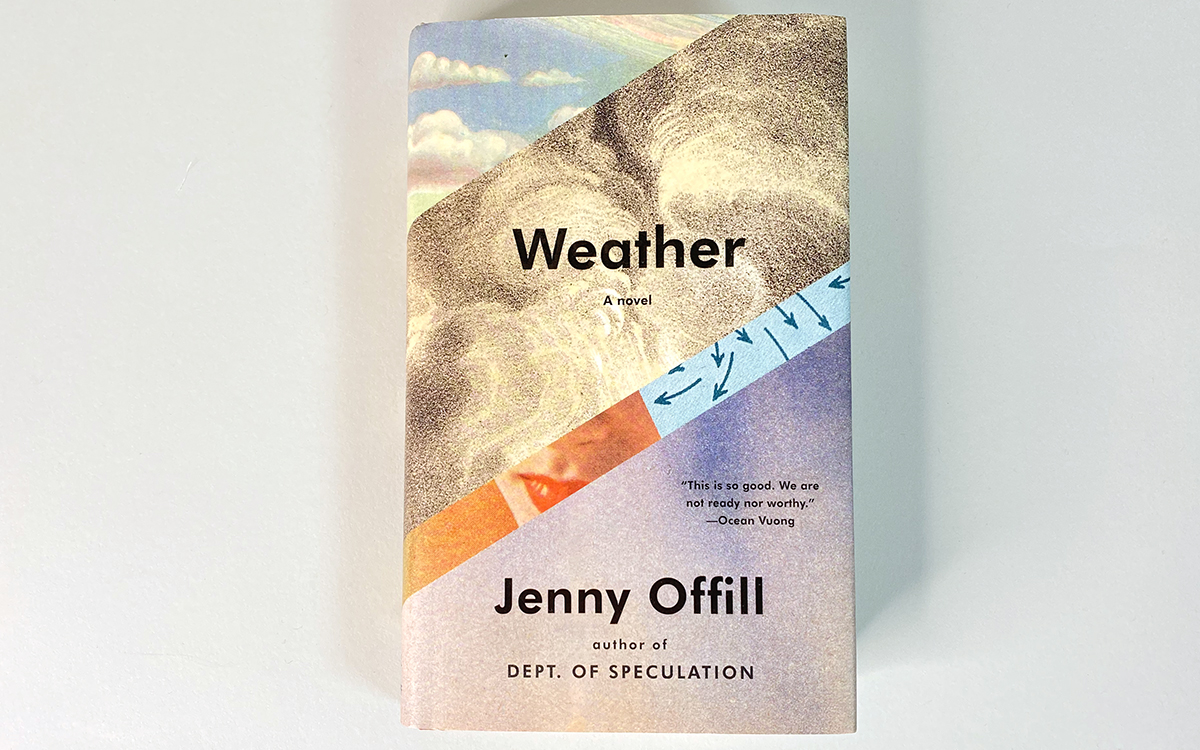
One day during this past, damp spring, my daughter noticed toadstools pushing up through the ground. She squatted down and poked at them. “Can we eat them?” she asked. When she saw the tight, curled heads of ferns emerging, she asked if she could eat those too. That’s when it hit me: The easiest way to my daughter’s heart was through her stomach. At the playground, her favorite activity for a time was harvesting hard, wine-colored crabapples from the tree over the picnic table. “Can I taste them?” she asked, putting the hard bitter fruit to her lips. She began to adventurously bumble through the underbrush after the berries of Solomon’s seal and Japanese barberry. “Are they food?” she asked. She became obsessed with the smashed berries dropped by the voracious flock of cedar waxwings rustling in our honeysuckle tree. “Are they yummy?” she wanted to know. She wanted to experience the natural world with the one sense our hikes left out: taste.
Of course, many of the things she wanted to sample aren’t things I cared to see her eat, so I guided her to the clump of chives in the corner of a garden bed. I realized that in my attempt to instill an appreciation of nature in my daughter, I’d neglected to understand what it was that she really appreciated. When she was rolling and kicking in my third-trimester belly, I swore that she’d exercise her legs navigating the trails as soon as she could walk. But, stupidly, I hadn’t considered that she’d have preferences. What she wanted was to interact with her surroundings in the most intimate way she knew: eating. She wanted to sample the world around her and I found myself doing the very opposite of what I wanted: holding her back from really experiencing her environment.
And so, I cultivated wilderness at home. I chose a spot in the garden and turned my daughter loose with packets of last year’s seeds. “You can eat whatever grows here,” I told her. She dumped out all the seeds together in one spot. I didn’t correct her, but left her alone to figure things out for herself. A week later, a mini forest of sprouts sprang up from the bed. “Taste it,” I said. She nibbled mustard leaves, pea shoots, herbs, and lettuces, grinning at the results.
Plants grow, but we tend gardens, tend coming from attend: “to apply one’s mind, one’s energies to.” At the core of applying one’s mind is the idea of paying attention. This, I realized, was what I wanted to cultivate in my daughter: not rote memorization of tree, mountain, stream, but a deep attention to the forces of nature that coexist. Through a taxonomy of taste, she came to understand one tiny swath of earth. From there, she learned about snail shells and rain, about how buds give way to flowers that give way to peas, which are crunchy and sweet, the acrid taste of raw kale, the zingy bite of a nasturtium petal. And that, I have realized, is good enough. Later, we can hit the trails, guidebooks in tow, and forage for wild edibles. But for now, she’s learning to love the small patch of wildness right outside our back door. What are forests and mountains worth if she hasn’t learned how to pay attention?
Recently, she peered into a nest of waxy leaves that she’d been observing day by day. She hadn’t known what kind of plant it was, but on this day, she recognized it instantly.
“That looks like broccoli!” she said.
“It is,” I replied.
“That looks delicious.”
“Go ahead,” I said. “Taste it.”
 The Magazine of The Sierra Club
The Magazine of The Sierra Club
